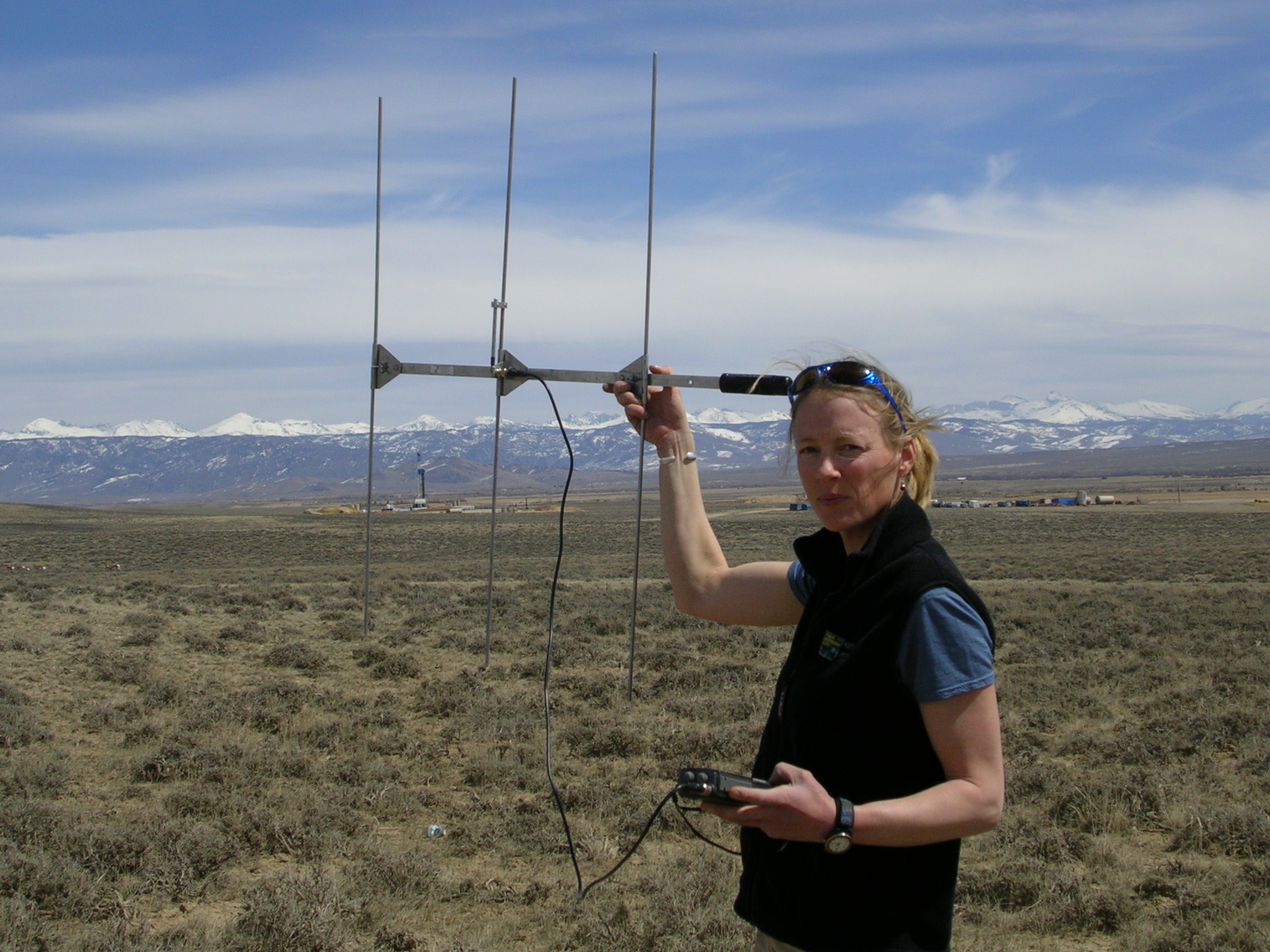Uncategorized
The New West: Greater Yellowstone’s wildness will only be saved if humans live smarter
Published
7 years agoon
Posted By
Outlaw Partners

As they recount the grim statistics, Lindsay Jones and Renee Seidler can tell you a lot about co-existence between people and our wild neighbors.
They see the story written daily on highways, in bird strikes against big picture windows, in power line collisions, habitat being fragmented and lost, and clashes with family pets. The toll registers in a thousand different ways expressed in thousands of different casualties.
The startling truth, they say, is that many animal deaths and injuries can be averted if only humans were more committed to smarter behavior; if certain species weren’t treated as “good for nothing”; and if the automatic historic response from some wasn’t simply to call in “wildlife control” agents whose primary emphasis has been resolving “problems” by lethal removal instead of teaching people skills in compatibility.
The founders of Teton Wildlife Rehabilitation Center, based in Driggs, Idaho, near the base of Teton Pass, say it’s not a matter of people having malicious intent, but more often naiveté and lack of understanding. It’s especially prevalent in the zone known as “exurbia.”
The verbatim definition of “exurb,” according to the Merriam-Webster Dictionary, is “a region or settlement that lies outside a city and usually beyond its suburbs and that often is inhabited chiefly by well-to-do families.”
In the Greater Yellowstone Ecosystem, more people each year are dwelling in exurbia, areas of rural landscape that traditionally provided homelands for wildlife but with human invasion are increasingly turning into conflict zones.
Forests, river corridors and wildlife migration routes, edges of wetlands and treeless winter range fit the description. Many of the newcomers and part-timers building in exurbia are moving here from cities and suburbs where they have no experience thinking about how to responsibly inhabit a wild neighborhood.
The result has been a steady erosion of the very wildlife values drawing them here in the first place. And, amid higher rates of conflicts have come a corresponding rise in numbers of injured animals, large and small, mammal and bird, common and sometimes imperiled.
It’s noteworthy that until recently wildlife rehab and rescue facilities in Greater Yellowstone have been exceedingly rare. Those important specialized wildlife hospitals that do exist—such as the Teton Raptor Center in Wilson, Wyoming, and Montana Raptor Conservation Center near Bozeman, Montana—constantly struggle for funding to meet growing demand for their services.
Moreover, there hasn’t been a single facility dealing with both mammals and birds and dedicated to bringing injured wildlife in for treatment, getting them quickly on the mend and releasing them back into the wild. This is the impetus behind Jones and Seidler creating Teton Wildlife Rehabilitation Center a few years ago.
While they have a supporter who donated land on the west side of the Tetons, they’ve had difficulty securing necessary permits. As they await approval, the dynamic duo has been out doing things equally as important—hosting public education programs on conflict prevention.
A year ago, Seidler tried to get a coyote family denning with pups near the exurban John Dodge subdivision spared after adult predators attacked a pair of miniature schnauzers roaming the woods unattended. One of the pet dogs was killed and another injured. In response, the pet owner, who was caretaking someone’s house, publicly announced he shot and killed some of the adult coyotes. (It is not known if the pups were left orphaned).
A few simple actions, such as keeping dogs within sight and knowing that adult coyotes become more territorial and protective during pupping season, Seidler says, could have prevented the conflict.
Before moving west, Jones did wildlife rehab work in Tennessee. She says the high wildlife attributes in Greater Yellowstone need safeguarding and celebration. Seidler is a biologist and former veterinary technician known for her work with the Wildlife Conservation Society, carrying out research projects on coyotes, wolves, moose, elk, small mammals and other species, including notably pronghorn.
She contributed to the work that resulted in Path of the Pronghorn, a collaborative effort to protect the ancient migration route for pronghorn traveling seasonally between Grand Teton National Park and the Upper Green River Valley.
Wildlife agencies focus efforts on managing species at population levels, it’s true, but this doesn’t mean individual animals do not matter. If a fur trapper accidentally catches a single wolverine and kills it, it can mean the loss of an entire population from a large expanse. Similarly, individual pronghorn carrying the knowledge of how to migrate teach it to their young.
“We believe it is our responsibility to counter the adverse impacts of humans on wildlife, where possible, and to teach people how to reduce human-wildlife conflicts,” Jones and Seidler write on their website tetonwildlife.org.
“We provide an educational resource and standard for conservation of native wildlife species through the rehabilitation of injured, sick and orphaned wildlife. We envision fostering the local community’s desire to assist wildlife in need by encouraging an understanding of wildlife ecology and a respect for how human-wildlife conflict impacts populations, thereby decreasing future incidents of injury.”
If we want to save the best of wild Greater Yellowstone that remains, it is up to us to know how our footprint impacts wildlife. The most powerful thing we can do: become educated.
Todd Wilkinson has been writing his award-winning column, The New West, for nearly 30 years. Living in Bozeman, he is author of “Grizzlies of Pilgrim Creek” about famous Greater Yellowstone grizzly bear 399 featuring 150 photographs by Tom Mangelsen, available only at mangelsen.com/grizzly. His profile of Montana politician Max Baucus appears in the summer 2017 issue of Mountain Outlaw and is now on newsstands.
The Outlaw Partners is a creative marketing, media and events company based in Big Sky, Montana.


Upcoming Events
april, 2024
Event Type :
All
All
Arts
Education
Music
Other
Sports
Event Details
Children turning 5 on or before 9/10/2024:
more
Event Details
Children turning 5 on or before
9/10/2024: Kindergarten
enrollment for the 2024-2025 school year can be completed by following the
registration process now.
Children
born on or after September 11, 2019: 4K enrollment is now open for
families that have a 4-year-old they would like to enroll in our program for
the 2023-2024 school year. Please complete the 4K Interest Form to
express your interest. Completing this form does not guarantee enrollment into
the 4K program. Enrollment is capped at twenty 4-year-olds currently
residing within Big Sky School District boundary full time and will be
determined by birth date in calendar order of those born on or after September
11, 2018. Interest form closes on May 30th.
Enrollment now is critical for fall preparations. Thank you!
Time
February 26 (Monday) - April 21 (Sunday)
Event Details
Saturday, March 23rd 6:00-8:00pm We will combine the heart-opening powers of cacao with the transcendental powers of breathwork and sound. Together, these practices will give us the opportunity for a deep
more
Event Details
Saturday, March 23rd 6:00-8:00pm
Time
March 23 (Saturday) 6:00 pm - April 23 (Tuesday) 8:00 pm
Location
Santosha Wellness Center
169 Snowy Mountain Circle
Event Details
We all are familiar with using a limited palette, but do you use one? Do you know how to use a
more
Event Details
We all are familiar with using a limited palette, but do you use one? Do you know how to use a limited palette to create different color combinations? Are you tired of carrying around 15-20 different tubes when you paint plein air? Have you ever wanted to create a certain “mood” in a painting but failed? Do you create a lot of mud? Do you struggle to achieve color harmony? All these problems are addressed in John’s workbook in clear and concise language!
Based on the bestselling “Limited Palatte, Unlimited Color” workbook written by John Pototschnik, the workshop is run by Maggie Shane and Annie McCoy, accomplished landscape (acrylic) and plein air (oil) artists,exhibitors at the Big Sky Artists’ Studio & Gallery and members of the Big Sky Artists Collective.
Each student will receive a copy of “Limited Palette, Unlimited Color” to keep and take home to continue your limited palette journey. We will show you how to use the color wheel and mix your own clean mixtures to successfully create a mood for your paintings.
Each day, we will create a different limited palette color chart and paint a version of a simple landscape using John’s directives. You will then be able to go home and paint more schemes using the book for guidance.
Workshop is open to painters (oil or acrylic) of any level although students must have some basic knowledge of the medium he or she uses. Students will be provided the book ($92 value), color wheel, value scale and canvas papers to complete the daily exercises.
Sundays, April 14, 21 and 28, 2024
Noon until 6PM.
$170.
Time
14 (Sunday) 12:00 pm - 28 (Sunday) 6:00 pm
Event Details
Everyone is invited to join us in celebrating 2 years of arts education in the BASE Art Studio with us! Take a tour
Event Details
Everyone is invited to join us in celebrating 2 years of arts education in the BASE Art Studio with us! Take a tour of the studio, meet our instructors, and meet other artists of all levels in our community. We’ll be getting creative and you’ll have the chance to make your very own artful button pin.
Stick around for our Volunteer Appreciation and Social beginning at 6:30 p.m.!
Time
(Thursday) 5:30 pm - 6:30 pm
Location
BASE
285 Simkins Dr











